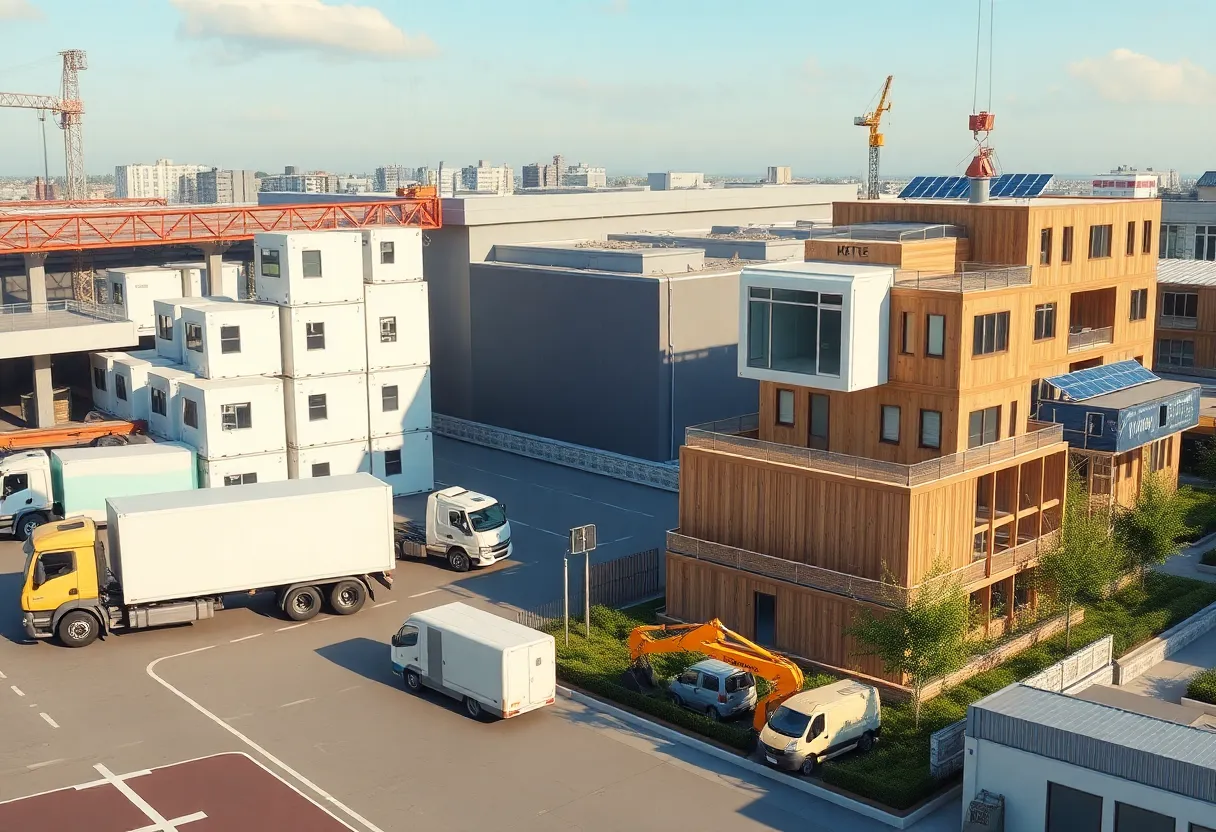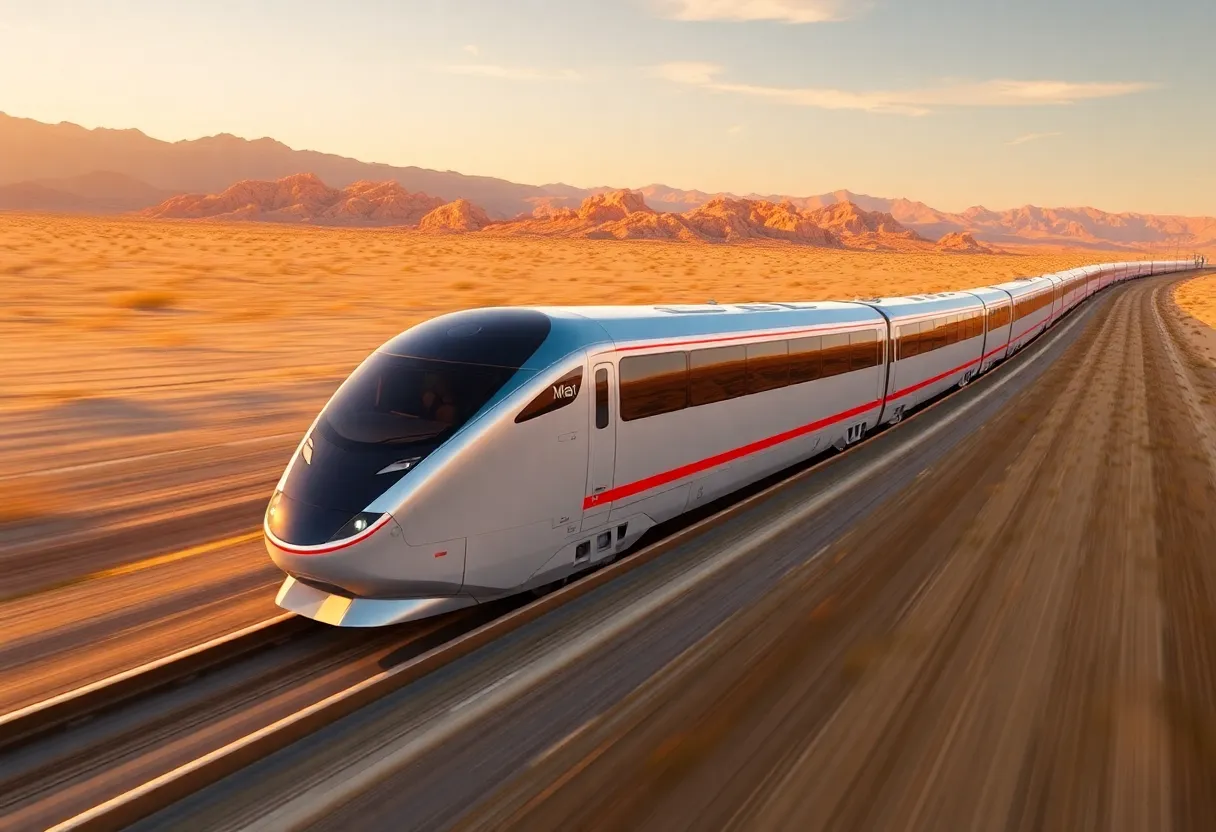Global, August 22, 2025
News Summary
A broad study of the modular construction sector covering 700+ companies across 50+ countries finds rapid expansion and clear profit patterns. Companies that combine factory manufacturing with on‑site assembly report substantially higher EBITDA than manufacturers-only players. Modular methods reduce on‑site labor, shorten schedules, and cut waste when systems and logistics are optimized. Cities are testing zero‑emission sites using electric machinery and battery power, while architects deliver near net‑zero buildings that pair off‑site construction with low‑carbon site operations. Success is tied to repeatable building systems, value‑chain control, digital integration and careful, demand‑led scaling.
Modular construction surges as integrated firms show stronger margins; zero‑emission pilots and net‑zero buildings push sustainability
Key takeaway: A recent global analysis of modular construction finds more than 700 firms in the sector and shows that companies controlling both factory manufacturing and on‑site assembly tend to earn substantially higher profits. Modular methods are reported to cut on‑site labor by up to 40% and shorten schedules by up to 50%. Meanwhile, cities and designers are testing low‑emission and net‑zero solutions on real projects, including a full zero‑emission construction pilot in Oslo and a recently opened mixed‑use building that targets net‑zero energy for heating, cooling and ventilation.
What the study found
The analysis looked at more than 700 modular companies across over 50 countries. The market is highly fragmented: a small share of players are large, while a long tail of more than 500 firms report revenues under €50 million. Only about 5–10% of companies exceed €500 million in revenue.
Profitability varies widely by business model and scope. Companies that both manufacture modules and carry out on‑site assembly show higher average earnings before interest, taxes, depreciation and amortization (EBITDA), roughly in the 15–20% range, compared with firms that only manufacture modules, which average around 5%. On average for companies building permanent modular buildings, weighted EBITDA is near 7%, with wide dispersion.
Why integration pays
Integrated players capture more of the value chain and can take broader project scopes. That enables tighter coordination, specially trained teams, and less reliance on subcontractor pass‑through pricing. The report highlights three shared traits of successful firms: a clearly defined building system, control over key value‑chain steps, and focused scaling.
Products, materials and markets
Modular product types split roughly between 3D volumetric modules and 2D panels, with 3D modules showing slightly higher average margins. Structural material focus tends to be concentrated: about 42% of firms primarily use steel, 38% timber and 11% concrete. Most firms focus on lower‑complexity projects; simpler, repeatable work often delivers the best margins because the factory process can be standardized and repeatable.
Business models and scale
The common commercial model is project‑based sales for permanent buildings, but rental and hybrid sales+rental models can raise factory utilization and achieve higher margins. Historically, modular was largely local. Today, improved standardization, logistics and digital tools are enabling more regional and cross‑border activity, though most firms still operate in local markets.
Risks and common pitfalls
Frequent missteps include building large automated factories before demand is proven and expanding geographically too early. The study recommends proving a building system on a few projects and a single building type or market before scale‑up; one failed, capital‑intensive project can jeopardize operations.
Environmental and productivity gains
Modular approaches reduce on‑site waste, improve safety and support circular strategies such as reuse, controlled dismantling and upcycling. Digital tools like material passports and BIM support planned reuse. Reported benefits include lower operational costs, improved occupant health, and sizable CO2 savings when manufacturing and energy sources are low‑carbon.
Real‑world tests: Oslo zero‑emission site and battery power systems
An urban pilot site in Oslo converted a former taxi turning area into a pedestrian space using only electric excavation and handling equipment. That pilot cut diesel use by around 35,000 litres and avoided roughly 92.5 tonnes of CO2 compared with diesel equivalents. The pilot recorded much lower noise and improved on‑site communication and safety. The city aims to make all municipal sites zero‑emission within a few years and expand procurement rules to favor low‑emission machinery.
Battery container systems are being trialled to replace diesel generators and provide on‑site power for cranes and hoists. These battery systems can sharply reduce noise and emissions and are being used by major developers in dense urban markets.
Net‑zero building: a case study
A recently completed mixed‑use building in Oslo combines offices, residences and street‑level retail and targets a triple zero approach for heating, cooling and ventilation. The design uses geothermal wells, rooftop photovoltaics, low‑energy heat pumps, natural ventilation driven by façade geometry, exposed thermal mass and timber cladding. The project reduces embodied and operational CO2 by more than half compared with a standard building and removes many typical technical voids, simplifying future remodelling.
What this means for stakeholders
Developers can speed delivery and reduce risk by embedding modular strategies early in design and forging long‑term supplier partnerships. Manufacturers must plan scale carefully and may gain from mixing sales and rental models. Contractors should adapt through partnerships or building in‑house modular expertise. Investors face opportunities but must assess operational and market risks closely.
FAQ
What is modular construction?
Modular construction means making building components in a factory and assembling partially or fully finished units on site. It includes 3D volumetric modules, 2D panels and bathroom pods used in permanent buildings.
How much can modular cut labour and time?
Modular methods can reduce on‑site labour by up to 40% and speed project timelines by as much as 50% in many cases, thanks to controlled factory work and repeatable processes.
Do integrated modular firms really earn more?
Yes. Firms that combine factory manufacturing and on‑site assembly tend to have higher profit margins (often 15–20% EBITDA) than firms that only manufacture modules (around 5% EBITDA), because they capture more value and can run more efficient operations.
Are zero‑emission construction sites practical today?
Trials show they are feasible for many urban projects. Full elimination of all emissions can be limited by specific fuel uses, but electric machinery and battery power systems have cut diesel use, noise and CO2 significantly on pilot projects.
How does modular support circular construction?
Modular design enables controlled dismantling, reuse of components and material tracking via digital passports. Standardization and reversible connections make future reuse and upcycling easier.
Key features at a glance
| Feature | What to know |
|---|---|
| Market scale | 700+ firms across 50+ countries; highly fragmented with many small players |
| Profit differences | Manufacture + assembly firms: ~15–20% EBITDA; manufacturers only: ~5% EBITDA; overall weighted ~7% |
| Time and labour | Up to 40% less on‑site labour and up to 50% faster timelines in many projects |
| Product types | 3D volumetric modules and 2D panels are common; bathroom pods included |
| Materials | Steel ~42%, timber ~38%, concrete ~11% among primary focuses |
| Complexity | Majority focus on low‑ to medium‑complexity projects; low complexity often yields higher margins |
| Sustainability tests | Zero‑emission construction pilots reduce diesel and CO2; net‑zero buildings combine geothermal, PV and natural ventilation |
| Digital enablers | BIM, parametric modelling, 3D configurators and material passports support scale and circularity |
Deeper Dive: News & Info About This Topic
Additional Resources
- McKinsey: Putting the pieces together — Unlocking success in modular construction
- Wikipedia: Modular construction
- BBC Future: The Scandinavian way to zero‑carbon construction
- Encyclopedia Britannica: Zero‑carbon construction (search)
- Designboom: Snøhetta Vertikal Nydalen, Oslo (Apr 27, 2024)
- Google Search: Snohetta Vertikal Nydalen Oslo
- Electrive: Oslo’s first zero‑emissions construction site in action
- Google News: zero‑emission construction site Oslo
- Noticias Ambientales: Circular construction — From use‑and‑throw‑away to reuse and transform buildings
- Google Scholar: circular construction reuse transform buildings
Author: Construction CA News
The CALIFORNIA STAFF WRITER represents the experienced team at constructioncanews.com, your go-to source for actionable local news and information in California and beyond. Specializing in "news you can use," we cover essential topics like product reviews for personal and business needs, local business directories, politics, real estate trends, neighborhood insights, and state news affecting the area—with deep expertise drawn from years of dedicated reporting and strong community input, including local press releases and business updates. We deliver top reporting on high-value events such as the Rose Parade, Coachella, Comic-Con, and the California State Fair. Our coverage extends to key organizations like the California Building Industry Association and Associated General Contractors of California, plus leading businesses in technology and entertainment that power the local economy such as Apple and Alphabet. As part of the broader network, including constructionnynews.com, constructiontxnews.com, and constructionflnews.com, we provide comprehensive, credible insights into the dynamic landscape across multiple states.




